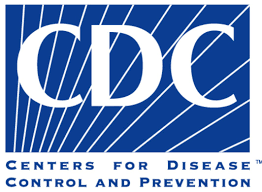CDC Releases Vital Signs on Adverse Childhood Experiences (ACEs)

The CDC Vital Signs series, launched in 2010, addresses a single, important public health topic each month. This month’s edition presents CDC’s first ever comprehensive estimates of the potential to improve Americans’ health by preventing Adverse Childhood Experiences (ACEs). ACEs and their harms are preventable using the best available evidence to create safe, stable, nurturing relationships and environments for all children and families.
These findings examine the associations between ACEs and 14 negative outcomes. CDC analyzed data from 25 states to estimate long-term health and social outcomes in adults that contribute to leading causes of illness and death and reduced access to life opportunities. We present information about how preventing ACEs has the potential to reduce leading causes of death such as heart disease, cancer, and diabetes, and have a positive impact on mental health and life opportunities like education and employment.
This piece includes several Vital Signs materials, including the Morbidity and Mortality Weekly Report (MMWR) article “Estimated Proportion of Adult Health Problems Attributable to Adverse Childhood Experiences and Implications for Prevention — 25 states, 2015–2017”.
Key points in the Vital Signs report include:
- ACEs are common and the effects can add up over time.
- Nearly 1 in 6 adult respondents reported four or more types of ACEs.
- ACEs were significantly associated with negative health outcomes, health risk behaviors, and socioeconomic challenges.
- Preventing ACEs could potentially prevent adult chronic conditions, depression, health risk behaviors, and negative socioeconomic outcomes.
- It is possible to reduce risk for ACEs while also mitigating consequences for those already affected by these experiences by creating the conditions for healthy communities and focusing on primary prevention.
Please share the CDC Vital Signs information broadly with your colleagues and partners. Visit the Vital Signs Web page to find the MMWR article, fact sheet, and other materials. Take advantage of CDC’s social media tools, such as the Vital Signs buttons and email updates. We’ve also attached an ACEs resource list and sample social media posts for Facebook, Twitter, and LinkedIn for you to use on your social media channels. Visit CDC’s Public Health Media Library at www.cdc.gov/syndication and search on the term Vital Signs.
Vital Signs is about more than data, it is about action. We look forward to continuing our work together to prevent adverse childhood experiences and promote healthy, resilient and productive lives and communities. Thank you for your support!
Jim Mercy, Director, CDC’s Division of Violence Prevention
Subscribe to the EMSCPulse
Get the EMSCPulse Newsletter delivered to your inbox every month.